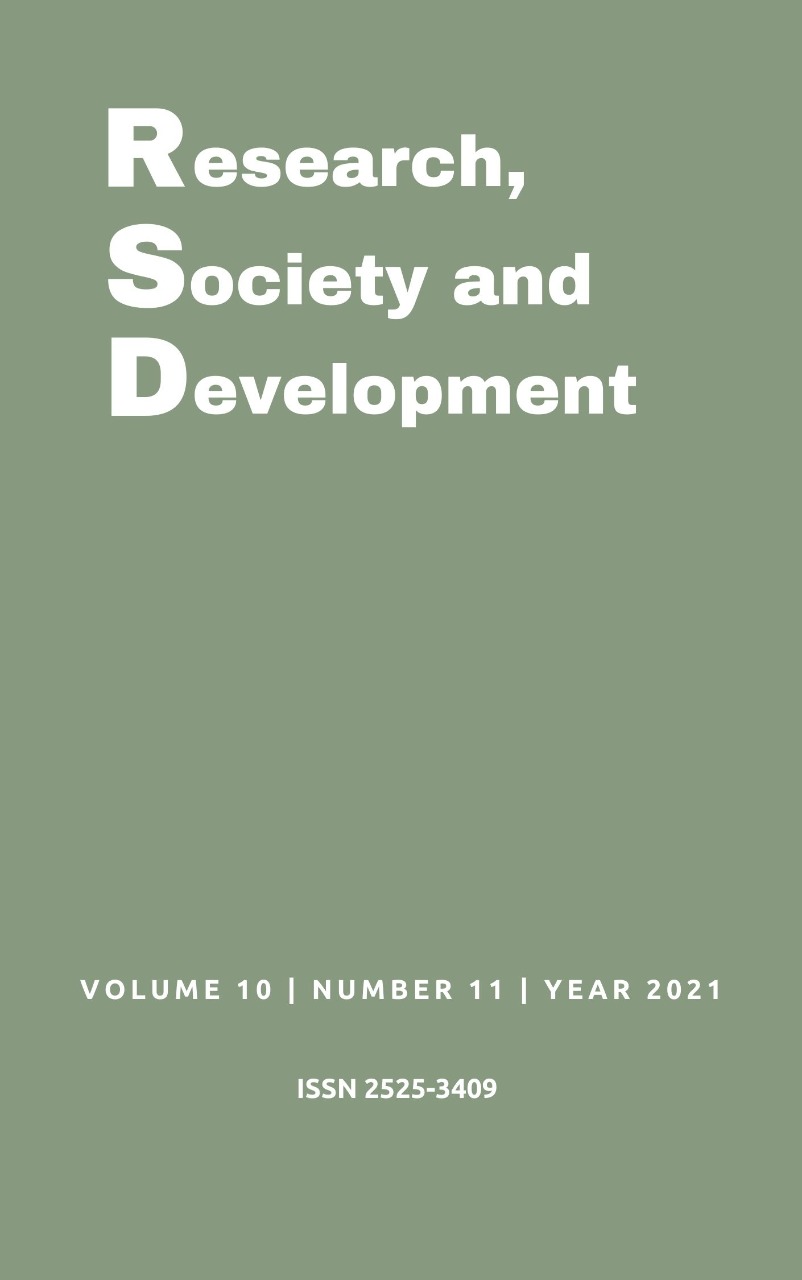Physiotherapeutic intervention in preparing pelvic strengthening for a normal birth
DOI:
https://doi.org/10.33448/rsd-v10i11.19562Keywords:
Pelvic floor; Pregnant women; pregnant women; vaginal delivery; Vaginal delivery; physical therapy; Physical therapy.Abstract
The quality of life of pregnant women who choose normal childbirth leads to public and local health considerations. A normal birth leads to changes in the pelvic floor muscles that can lead to physiological complications. Presenting information about physical therapy conduct in the preparation of pelvic strengthening after vaginal delivery are the main objectives of this work. The study was presented as a literature review through scientific articles published in national and international scientific journals. Papers indexed in the databases ScienceDirecct, PubMed, Medline, Web of Science, EMBASE, LILACS, Scielo and Academic Google were selected. Human anatomy of the pelvic floor, its innervations and contexts were presented in this work, indexed works that involve the contextualization of normal birth, pelvic floor, diseases and their aspects were also contemplated. A physical therapy program in these situations is extremely important for the quality of life of women and associates.
References
Anastasiadi, Z., Lianos, G. D., Ignatiadou, E., Harissis, H. V., & Mitsis, M. (2017). Breast cancer in young women: an overview. In Updates in Surgery.
Andrade, B. C. D. E. (2021). importância do fortalecimento do assoalho pélvico em gestantes. UniAGES Centro Universitário Bacharelado em Fisioterapia.
Assis, L. C. de. (2010). Efetividade de exercícios do assoalho pélvico durante a gestação como medida preventiva da incontinência urinária e da disfunção muscular do assoalho pélvico - Dissertação (mestrado). Dissertação (mestrado), 01 of 90.
Berghmans, B. (2018). Physiotherapy for pelvic pain and female sexual dysfunction: an untapped resource. International Urogynecology Journal, 29(5), 631–638.
Nagamine, B. P. ., Dantas, R. da S. ., & Silva, K. C. C. da . (2021). The importance of strengthening the pelvic floor muscles in women’s health. Research, Society and Development, 10(2), e56710212894. https://doi.org/10.33448/rsd-v10i2.12894
Castro LA, Machado GC, Trindade 2019;56(S4):39-51APNT. Fisioterapia em mulheres com incontinência urinária–relatos de caso. Revista UNINGÁ.
De Castro Cruz, A., Fonseca, S. T., Araújo, V. L., Da Silva Carvalho, D., Barsante, L. D., Pinto, V. A., & Souza, T. R. (2019). Pelvic drop changes due to proximal muscle strengthening depend on foot-ankle varus alignment. Applied Bionics and Biomechanics, 2019. https://doi.org/10.1155/2019/2018059
Goodrich, F. W. (1953). The theory and practice of natural childbirth. The Yale journal of biology and medicine, 25(6), 529–534.
Lose, G., Fantl, J. A., Victor, A., Walter, S., Wells, T. L., Wyman, J., & Mattiasson, A. (2001). Outcome measures for research in adult women with symptoms of lower urinary tract dysfunction. Standardization Committee of the International Continence Society. Acta obstetricia et gynecologica Scandinavica, 80(11), 981–985. https://doi.org/10.1034/j.1600-0412.2001.801102.x
Moreno AL. Fisioterapia em uroginecologia. 2009. (2 ed.) Barueri: Manole;
Netter. (2000). Atlas de Anatomia Humana (Novartis (org.); (2o ed).
Nolasco, J.; Martins, Letícia Berquo, M.; Alves Sandoval, R. (2008). Atuação da cinesioterapia no fortalecimento muscular do assoalho pélvico feminino: revisão bibliográfica. EFDeportes.com, Revista Digital, 12(117), 1–8.
Nygaard IE, Clark E, Clark L, et al Physical and cultural determinants of postpartum pelvic floor support and symptoms following vaginal delivery: a protocol for a mixed-methods prospective cohort study BMJ Open 2017;7:e014252. doi: 10.1136/bmjopen-2016-014252
Pereira A. S. et al. (2018). Metodologia da pesquisa científica. UFSM
Pedraza, R., Nieto, J., Ibarra, S., & Haas, E. M. (2014). Pelvic muscle rehabilitation: A standardized protocol for pelvic floor dysfunction. Advances in Urology, 2014, 1–7. https://doi.org/10.1155/2014/487436
R. Pedraza et al., “Efetividade de exercícios do assoalho pélvico durante a gestação como medida preventiva da incontinência urinária e da disfunção muscular do assoalho pélvico - Dissertação (mestrado)”, Adv. Urol., 64(2), 01 of 90, 2018, doi: 10.1007/s00192-017-3536-8.
Permanyer, I., & Boertien, D. (2019). A century of change in global education variability and gender differences in education. PLoS ONE, 14(2), 1–22. https://doi.org/10.1371/journal.pone.0212692
Rett, M.T.; et al. Existe diferença na contratilidade da musculature do assoalho pélvico feminino em diversas posições? Ver brasileira ginecol obstet.,v. 27, p. 20- 23, 2005. RETT, M.T.; et al. Existe diferença na contratilidade da musculature do assoalho pélvico feminino em diversas posições? Ver brasileira ginecol obstet., 27, 20- 23, 2005.
Uldahl, M., Christensen, J. W., & Clayton, H. M. (2021). Relationships between the Rider’s pelvic mobility and balance on a gymnastic ball with equestrian skills and effects on horse welfare. Animals, 11(2), 1–14. https://doi.org/10.3390/ani11020453
Vural, M. (2018). Pelvic pain rehabilitation. Turkish Journal of Physical Medicine and Rehabilitation, 64(4), 291–299. https://doi.org/10.5606/tftrd.2018.3616
Downloads
Published
How to Cite
Issue
Section
License
Copyright (c) 2021 Josiany Resplandes da Silva; Eliane Candida da Silva; Karla Camila Correia da Silva

This work is licensed under a Creative Commons Attribution 4.0 International License.
Authors who publish with this journal agree to the following terms:
1) Authors retain copyright and grant the journal right of first publication with the work simultaneously licensed under a Creative Commons Attribution License that allows others to share the work with an acknowledgement of the work's authorship and initial publication in this journal.
2) Authors are able to enter into separate, additional contractual arrangements for the non-exclusive distribution of the journal's published version of the work (e.g., post it to an institutional repository or publish it in a book), with an acknowledgement of its initial publication in this journal.
3) Authors are permitted and encouraged to post their work online (e.g., in institutional repositories or on their website) prior to and during the submission process, as it can lead to productive exchanges, as well as earlier and greater citation of published work.

